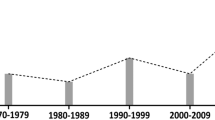Abstract
Alternaria tenuissima, the parasitic fungus, was obtained from the pruned upper-cut surfaces of mulberry stems. This fungus contains dark pigment because of the presence of melanin in the cell wall. To obtain less-pigmented cell walls, this fungus was grown under dark condition. When the pigmented and less-pigmented cell walls were chemically analyzed, no differences were observed in amino-acid composition, hexoses, or pentoses. However, in pigmented cell walls, higher contents of melanin (2.6%) were found than in less-pigmented cell walls (0.3%). Interestingly, a significant difference was observed in the relative fatty-acid compositions between these two types of cell walls. Among the major fatty acids, there were increased concentrations of tetradecanoic acid (C14:0), hexadecanoic acid (C16:0), 9-hexadecenoic acid (C16: 1,Δ9), and 9-octadecanoic acid (C18:1,Δ9) and a concomitant decrease in 9,12-octadecadienoic acid (C18:2,Δ9,12) in less-pigmented compared with pigmented cell walls. This difference in fatty-acid composition may be related to the higher percentage of melanin in the pigmented than the less-pigmented cell walls. Lesser amounts of 9,12-octadecadienoic acid in less-pigmented cell walls may have been caused by the growth of the fungus under environmental stress conditions. An interesting observation was the presence in pigmented cell walls only of methyl-substituted fatty acids with carbon numbers C14 to C17, but their occurrence could not be ascertained in the present study.
Similar content being viewed by others
Literature Cited
Agarwal A, Garg GK, Devi S, Mishra DP, Singh US (1997) Ultrastructural changes in Brassica leaves caused by Alternaria brassicae and destruxin B. J Plant Physiol 106:1085–1093
Alviano CS, Farbiarz SR, De Souza W, Angluster J, Travassos LR (1991) Characterization of Fonsecaea pedrosoi melanin. J Gen Microbiol 137:837–844
Bell AA, Wheeler MH (1986) Biosynthesis and functions of fungal melanins. Annu Rev Phytopathol 24:411–451
Butler MJ, Day AW (1998) Fungal melanins: A review. Can J Microbiol 14:1115–1136
Calvo AM, Hinze LL, Gardner HW, Keller NP (1999) Sporogenic effect of polyunsaturated fatty acids on development of Aspergillus spp. Appl Environ Microbiol 65:3668–3673
Calvo AM, Wilson RA, Bok JW, Keller NP (2002) Relationship between metabolism and fungal development. Microbiol Mol Biol Rev 66:447–459
Chaplin MF (1986) Monosaccharides. In: Chaplin MF, Kennedy JF (eds) Carbohydrate analysis, a practical approach. Oxford, UK: IRL Press, pp 1–36
Fernell WR, King HK (1953). The simultaneous determination of pentose and hexose in mixtures of sugars. Analyst 78:80–83
Kanjilal S, Prasad RBN, Kaimal TNB, Ghafoorunissa Rao SH (1999) Synthesis and estimation of calorific value of a structured lipid-potential reduced calorie fat. Lipid 34:1045–1055
Kawamura C, Tsujimoto T, Tsuge T (1999) Targeted disruption of a melanin biosynthesis gene affects conidial development and UV tolerance in the Japanese pear pathotype of Alternaria alternata. Mol Plant Microbe Interact 12:59–63
Kimura N, Tsuge T (1993) Gene cluster involved in melanin biosynthesis of filamentous fungus Alternaria alternata. J Bacteriol 175:4427–4435
Pupin AM, Messias CJ, Piedrabuena AE, Roberts DW (2000) Total lipids and fatty acids of strains of Matarhizium anisopliae. Braz J Microbiol 31:121–128
Reddy RC, Misra S, Chandrashekhariah (2002) Alternaria tenuissima—A new fungal pathogen on mulberry stem. Indian Phytopathol 55:532–533
Shan R (1966) The polyunsaturated fatty acids of microorganisms. Adv Lipid Res 4:107–174
Thomma BPHJ (2003) Alternaria spp.: From general saprophyte to specific parasite. Mol Plant Pathol 4:225–236
Turian G, Bianchi DE (1972) Conidiation in Neurospora. Bot Ver 38:119–154
Van Etten JL, Gottlies D (1965) Biochemical changes during the growth of fungi. II. Ergosterol and fatty acids in Penicillium atrovenetum. J Bacteriol 89:409–414
Wang H, Li J, Bostock RM, Glichrist DG (1996) Apoptosis: A functional paradigm for programmed plant cell death induced by a host-selective phytotoxin and invoked during development. Plant Cell 8:375–391
Weete JD (1980) Lipid biochemistry of fungi and others organisms. New York, NY: Plenum, p. 388
Weete JD (1981) Lipids in fungal growth and reproduction. In: Turian G, Hohl HR (eds) The fungal spore: Morphogenic controls. New York, NY: Academic, pp 463–485
Weete JD, Lawer GC, Laseter JL (1973) Total lipid and esters components of Rhizopus arrhinius: Identification and metabolism. Arch Biochem Biophys 155:411–419
Wheeler MH, Bell AA (1988) Melanins and their importance in pathogenic fungi. Curr Top Med Mycol 2:338–387
Yemm EW, Cocking EC (1955) The determination of amino acids with ninhydrin. Analyst 80:209–213
Acknowledgments
The authors are thankful to the director of the Indian Institute of Chemical Technology, Hyderabad, India for encouragement and support.
Author information
Authors and Affiliations
Corresponding author
Rights and permissions
About this article
Cite this article
Kishore, K.H., Kanjilal, S., Misra, S. et al. Comparative Chemical Characterization of Pigmented and Less Pigmented Cell Walls of Alternaria tenuissima. Curr Microbiol 51, 399–401 (2005). https://doi.org/10.1007/s00284-005-0098-7
Received:
Accepted:
Published:
Issue Date:
DOI: https://doi.org/10.1007/s00284-005-0098-7




